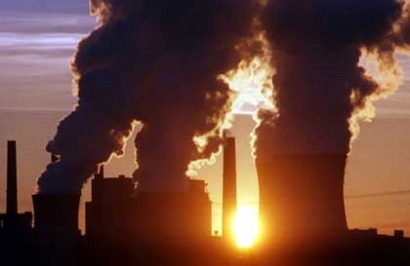
In May 2010, Codexis was selected to receive up to a $4.7 million ARPA-E Recovery Act programme grant from the US Department of Energy for development of innovative technology to remove carbon dioxide from coal-fired power plant emissions. The grant was one of 37 research projects which the DoE said "could fundamentally change the way the country uses and produces energy."
"Current carbon capture technology is inefficient and costly, hindering large scale deployment," said Alan Shaw, Ph.D., President and Chief Executive Officer in the run up to the ARPA-E Energy Innovation Summit where the announcement was made. "It can nearly double the cost of electricity produced by a coal-fired power plant, and decrease the amount of total plant electricity output. Using Codexis technology, power plant operators may be able to use more efficient capture methods to decrease the cost of carbon capture. This, in turn, could lead to wider adoption of this important technology solution."
The data quoted by Shaw was presented in a poster session and presentation by James Lalonde, Ph.D., Codexis' Vice President of Biochemistry and Engineering Research and Development, at the ARPA-E Energy Innovation Summit.
30% reduction in energy demands
The ARPA-E Recovery Act programme grant is being used by Codexis and CO2 Solution, Inc., (Quebec, Canada) to develop custom enzymes to decrease energy needed to capture carbon dioxide from coal-fired power plants. According to Codexis, their enzymes have been shown “to be functional and stable in relatively inexpensive and energy efficient solvents for 24 hours at temperatures up to 75 degrees Celsius”. Use of these solvents with fully developed enzymes is expected to reduce the energy needed to capture carbon dioxide within the plant by 30%, it reveals.
“This performance is essential to reaching a key goal of the program – using improved technology to reduce the incremental cost of electricity with carbon capture from an 80% increase using presently available technology to no more than a 35% increase,” says the company.
These reductions are possible through development of customized carbonic anhydrase (CA) enzymes, or biocatalysts. CA is an enzyme which catalyzes the transfer of carbon dioxide in nature - for example, CA enables carbon dioxide to be released from blood into the lungs during respiration. However, the natural enzyme does not function at the high temperatures and harsh industrial conditions in coal-fired power plant flue gas. In research being presented this week, enzyme performance has been improved by about 100,000 times over natural forms of the CA enzyme.
For additional information:

